Panbo(at) gets a Furuno DRS2DNXT, cue the comparisons
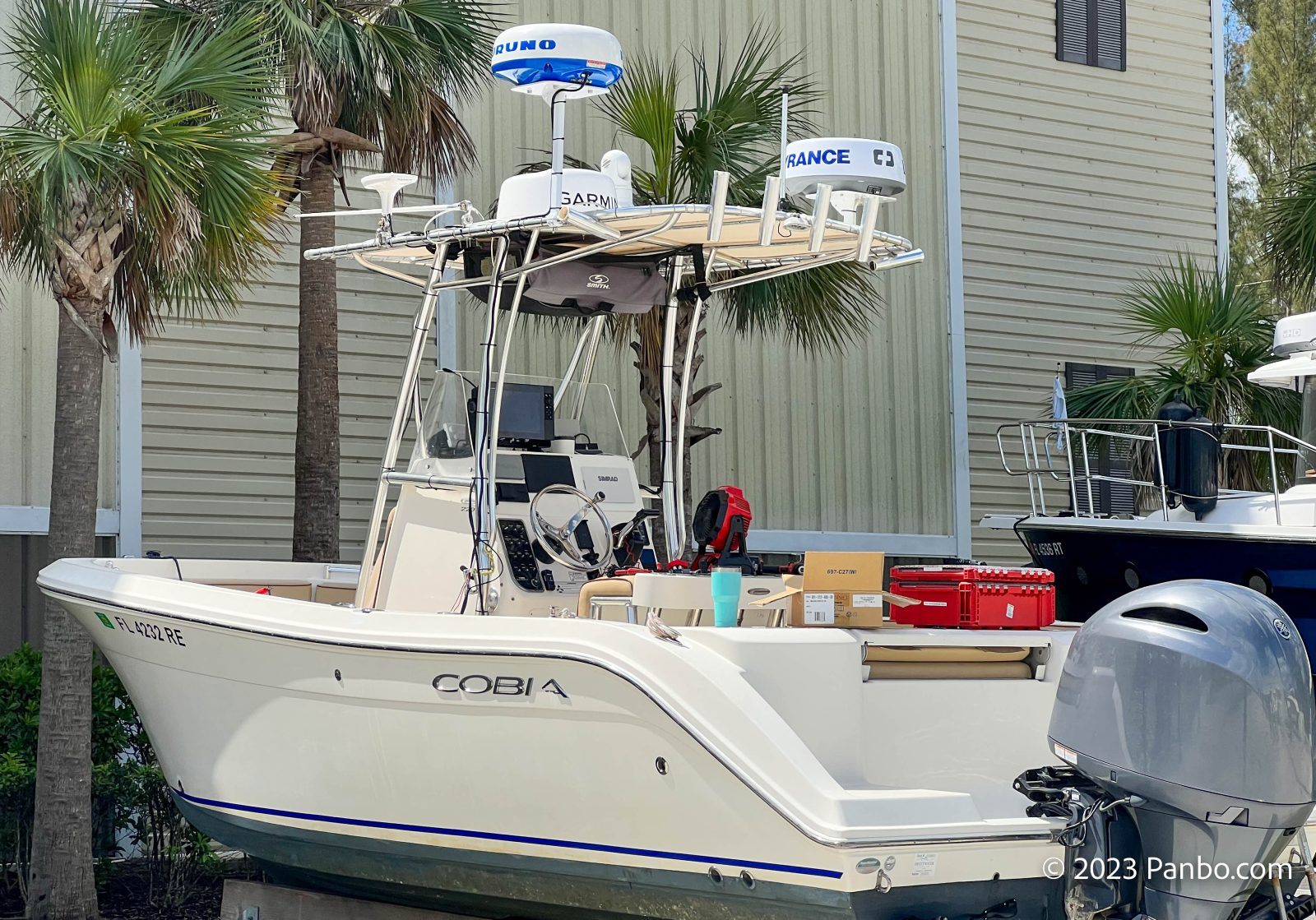
Since I started paying attention to marine electronics, I’ve heard that Furuno radars are the class of the industry. My own experiences on boats have shown that rumor to be accurate. So, I was awfully disappointed when I couldn’t get my hands on an eval unit when I did my radar comparisons (part II here). I have some good news! Furuno was able to provide a unit for comparison and I’ve had (just a little) bit of time on the water with it.
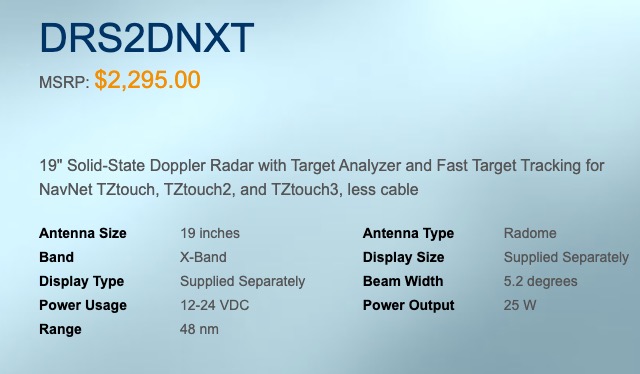
Furuno supplied a 19-inch DRS2DNXT radome along with a TZT12F 12-inch TZT3 MFD. The DRS2DNXT is a 19-inch, 25-watt, solid-state, enclosed-dome radar unit priced at $2,295. It weighs in at 14.3 pounds, which is very close to the Simrad Halo 20+’s 13 pounds, but it proved to be problematic for my improvised mounting system. In addition to the DRS2DNXT, Furuno also offers the 24-inch DRS4DNXT radome. Both units feature nearly the same specifications, except the DRS4DNXT’s larger antenna allows a horizontal beam width of 3.9 degrees compared to the DRS2DNXT’s 5.2 degrees.
Mounting challenges
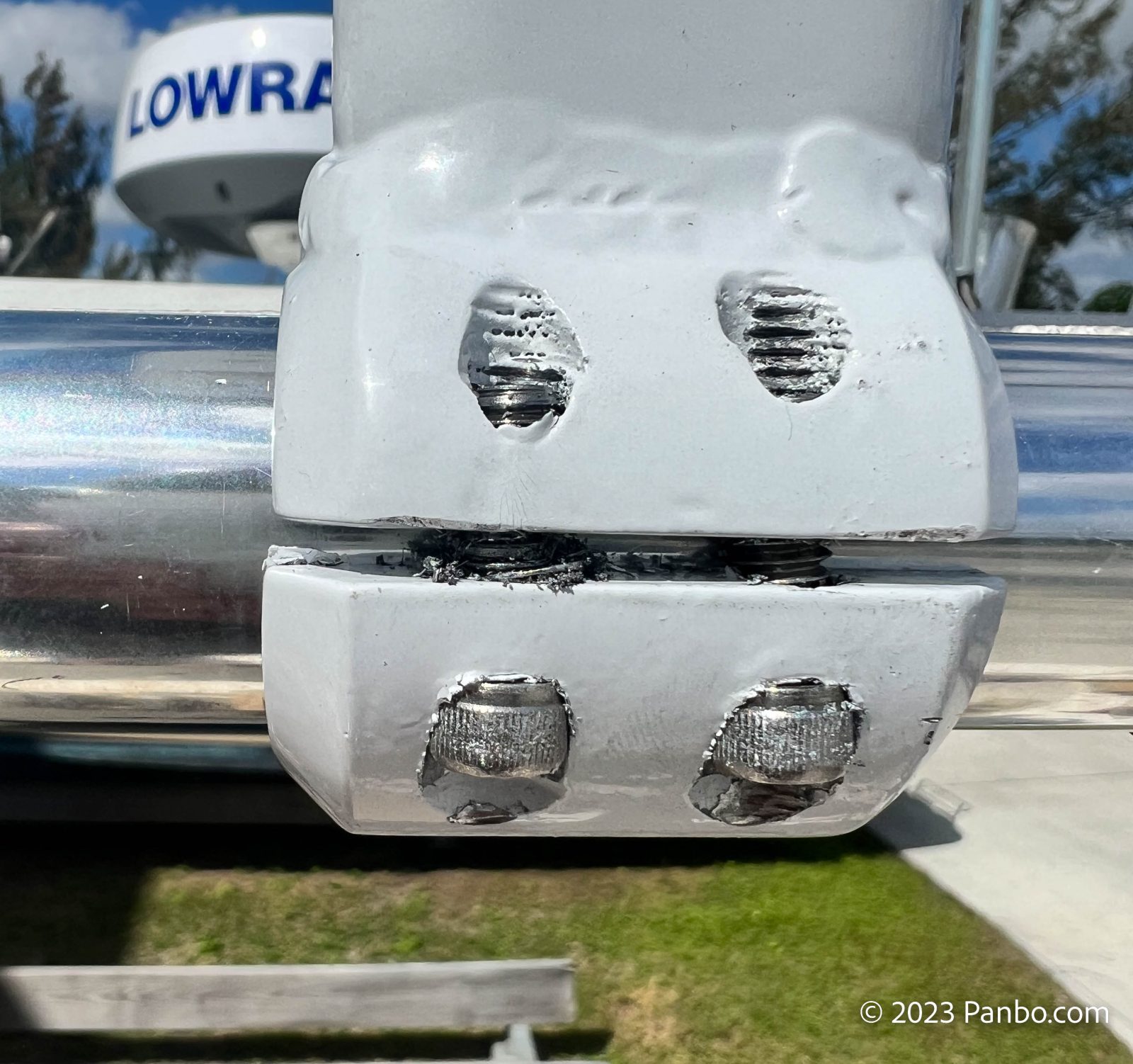
As I’ve previously mentioned, Nautical Creations made me some highly custom radome pedestals so I could mount three radar units on a 22-foot boat. Unfortunately, the tallest of the mounts had some trouble during really rough seas while I was out testing Seakeeper Ride. I tried to tighten the clamp down some more but only succeeded in stripping threads, seizing bolts, and generally making a mess. Since then, that mount has been back to Nautical Creations for repairs, but even after it returned I haven’t been able to get it tight enough to hold the considerable forces of, even a light, radome. So, it looks like Nautical Creations and I are going to go back to the drawing board for a different design.
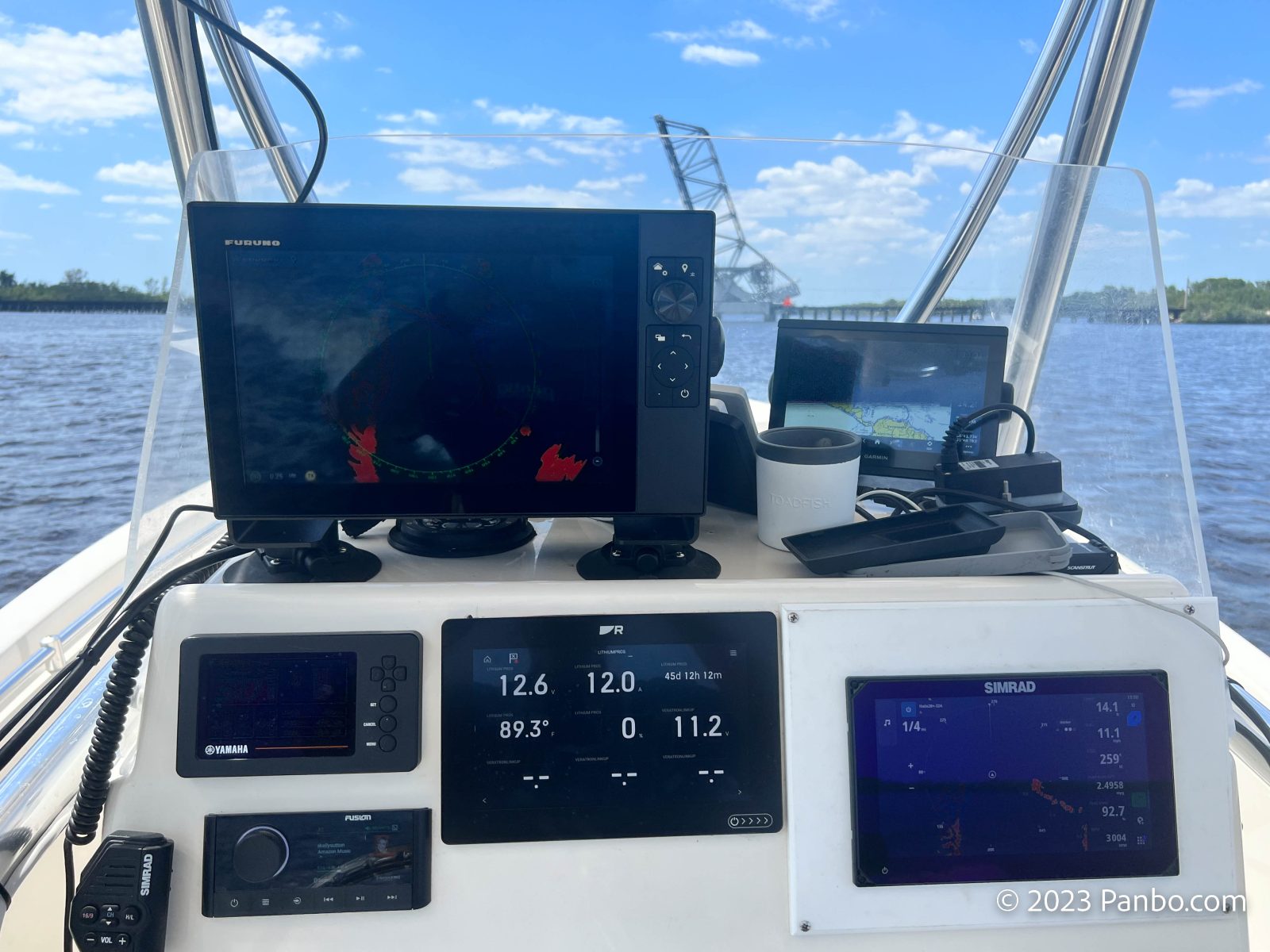
As you can see in the picture above, I’m about out of room on Panbo(at)‘s helm for any more MFDs. Fortunately, there aren’t any more brands left unrepresented. Unfortunately, there are a few models I’d still like to test, but something is going to have to give.
Early results
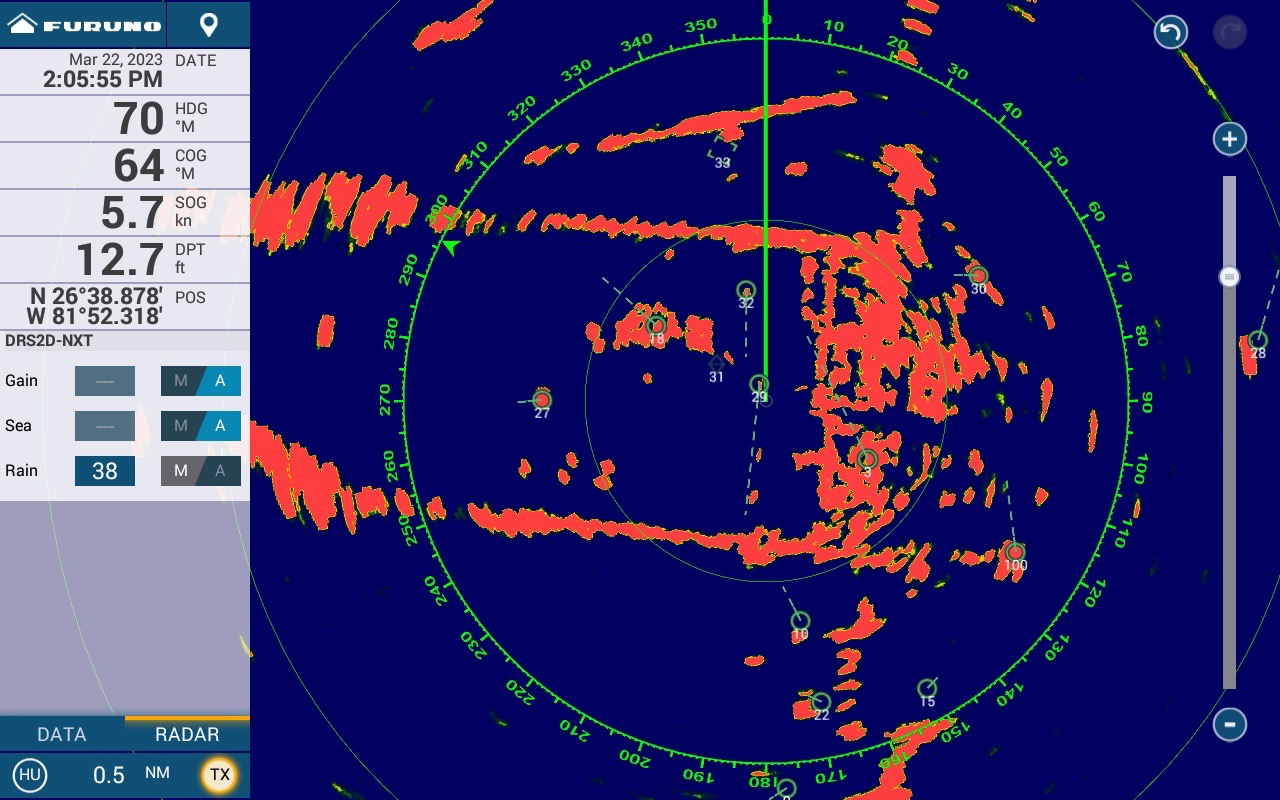
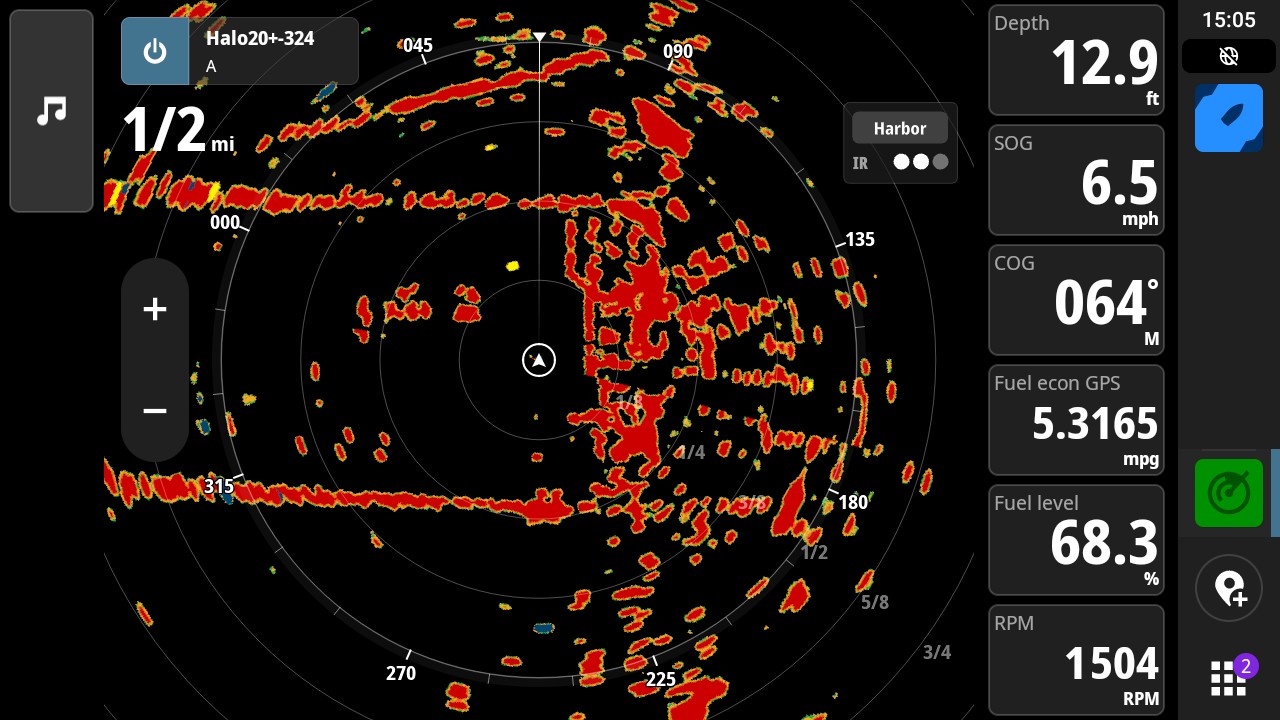
Currently, Panbo(at) is limited to mounting three (actually, two until I get the Furuno’s mount resolved) radomes at a time. As a result, I likely won’t get head-to-head-to-head-to-head comparisons. For my early testing I focused on comparing the Furuno and Simrad radars. That’s because on the Calooshatchee River, I thought the Simrad turned in the best performance.
Visually, I think the results are extremely competitive. There are individual areas of the returns where one radar or the other did a bit better, but boy, it’s close. Both radars are using their out-of-the-box defaults. In subsequent tests, I’ll compare some of the beam-sharpening capabilities of both units. One thing I noticed was that I found the Furuno TZT12F’s tuning interface a little more intuitive to use. I haven’t had a lot of time with Furuno radars, so the interface was pretty much brand-new to me.
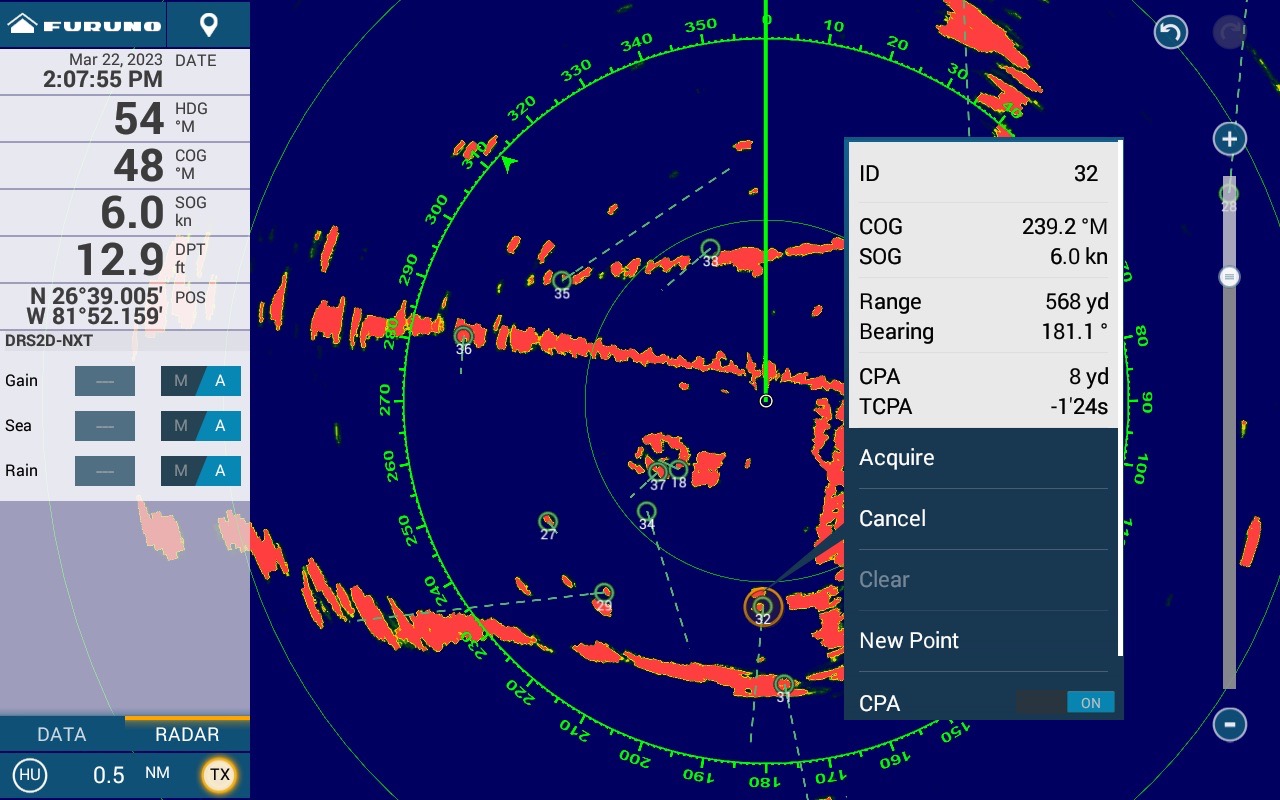
From initial power-on, the Furuno radar automatically tracks targets. I can’t find anywhere Furuno calls this ARPA, but it’s what I’d call it. In the screenshot above, you can see target tracking not only showing a few boats in range but also several cars on the bridges overhead (targets 33, 35, and 36). The heading looks to be off just a little, but that’s still might impressive work from 50+ feet under the bridge with the structure of the bridge in the way.
I have some work to do with my mounting system so I can get the boat offshore and get comparisons in a wider variety of conditions. But, in the meantime, I can say that, at least in my opinion, Furuno continues to build some of the best radars out there.




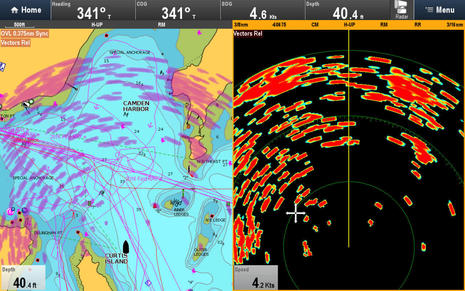
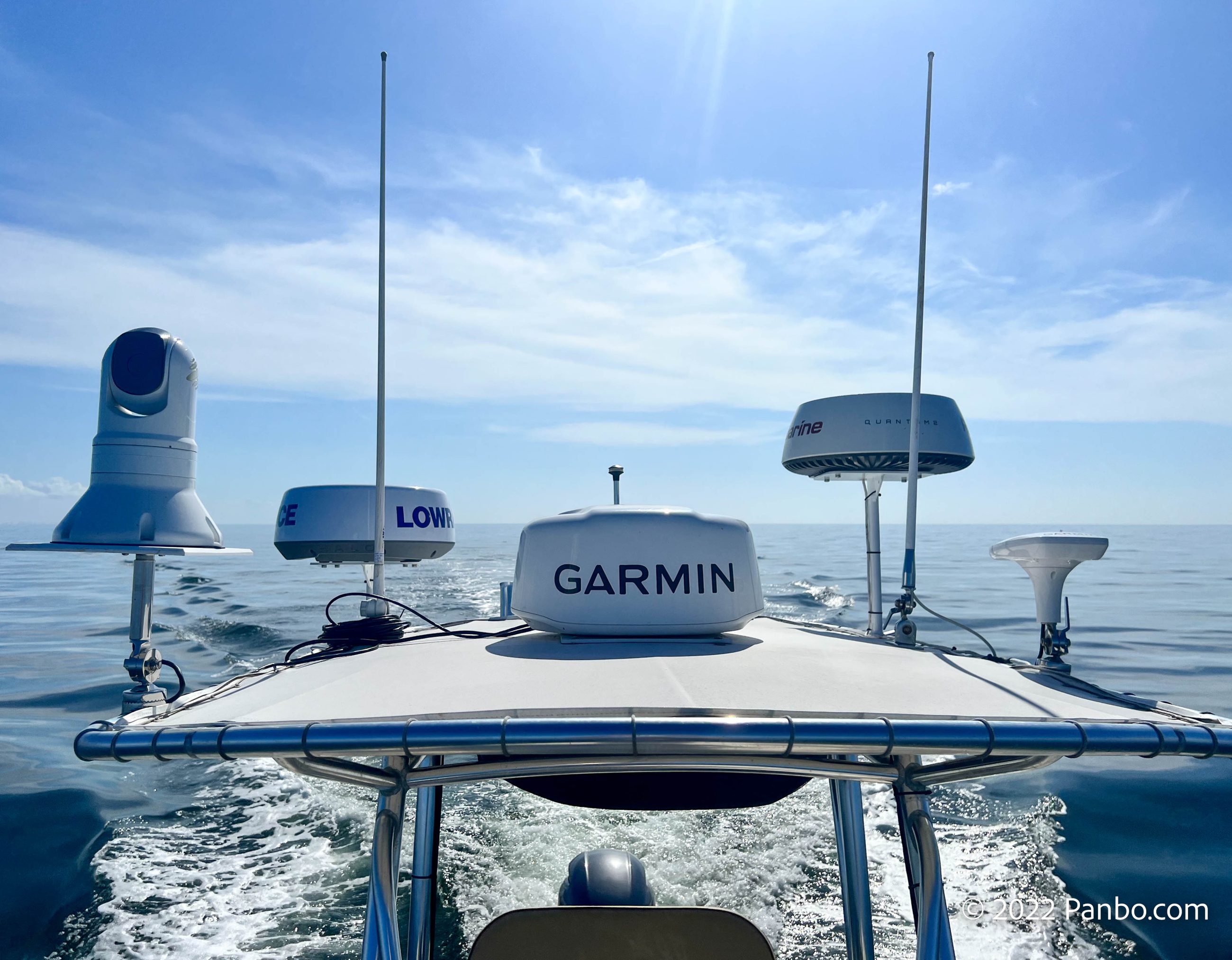








Just a thought, Ben – would a suitably-sized crossbar (between the Furuno mount and the Lowrance) allow your mounts to share the transverse load better? I can always spot a pro by looking at their toolbox 🙂 .
Hartley
Hartley,
Yes, I think what you suggest would work decently to correct the issues I’m having. I’m hoping to make something a little more flexible that will enable me to test a wide variety of equipment, from radars to thermal cameras, to sat compasses, etc, without carving up too much of this poor boat.
-Ben S.
I would think that having your shop weld up a transverse platform – made out of a reinforced flat plate – with perhaps two support legs on each side to support it to the existing frame might work. That would keep the rotational load on those tube-gripping fittings to a minimum, so you wouldn’t be stripping the threads trying to keep them tight.
You could do a whole “car topper” frame the same way – the beauty of having a couple flat plates available is you could use those short fixed 1″X14 mounts (like a Shakespeare 4365) to stick all sorts of stuff on there just by drilling a couple holes. Covering the whole top means the attachment legs would share the load (especially the rolling/pitching loads!)
Hartley
That’s exactly what I’m working on right now. The flexibility of a bunch of different mounting platforms would make my life a lot easier.
-Ben S
Nice! Hope that means my radar is not far behind. Interested to see ARPA impressions as I think that is where the value is in a done (navigation vs bird finding). For whatever reason in the not cheap Furuno shootout they didn’t have heading sensors to enable ARPA.
Add an SCX20. The DRS4DNXT and SCX20 is a killer combo on my boat. I’ll bet it will be with the DRS2DNXT as well.
On my experience, if you want to go more than a feet in any support for a radar, light or camera in a small boat, you’re will find problem in the support down the road. The forces involves under heavy seas, make the support broke or go shacked badly. Happened to me with a couple seaview high support.